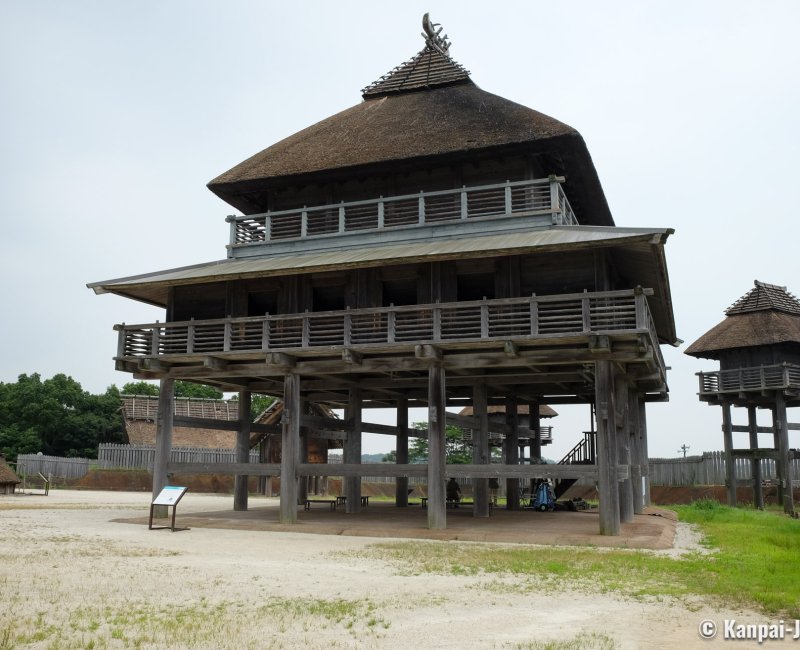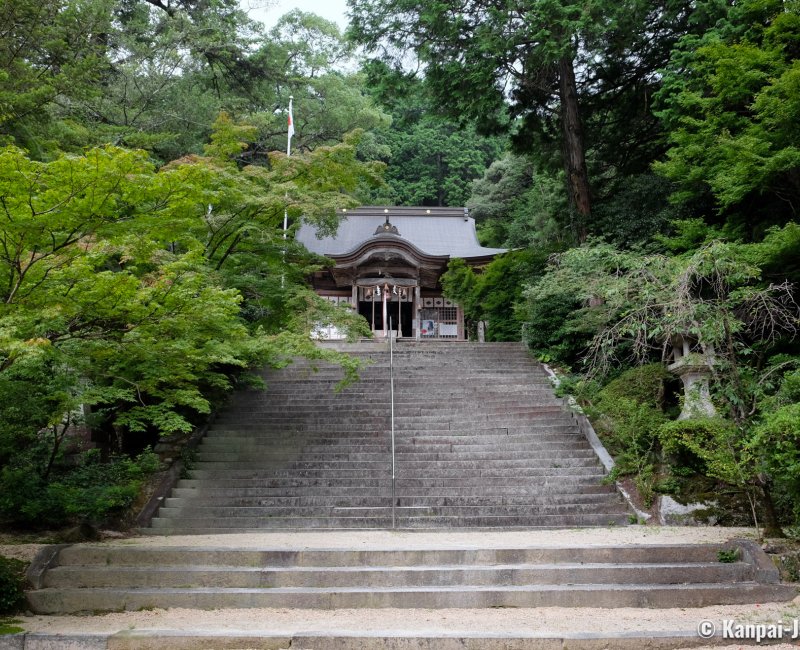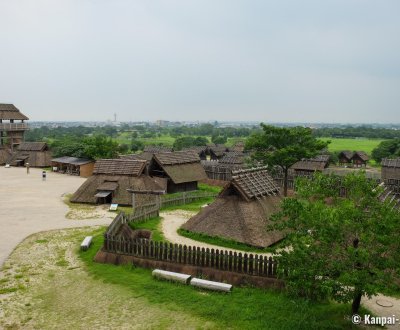Yoshinogari
Saga’s Historical and Archaeological Site
Yoshinogari is a village part of Kanzaki City in the east of Saga prefecture, on Kyushu Island in Japan. It is famous for its large archaeological site, a life-sized prehistorical village reconstructed to show the Yayoi period’s daily life.
Yoshinogari archaeological site was discovered in the 1980s at the start of an industrial area development in Kanzaki City in the north of Kyushu. The excavations have unearthed the ruins of a former fortified village, surrounded by a moat from the Yayoi period, that are to this day the oldest and largest remains of this prehistorical period discovered on the archipelago.
The beginnings of the Japanese civilization are difficult to date precisely and they are usually estimated to span from about 400 BCE to 250 CE on a period called Yayoi. Its is notably characterized by the mastering of rice cultivation, ceramics with Korean and Chinese influences as well as the use of bronze and iron. This era follows the Jomon period, remains of which can also be visited in the Tohoku with sites listed in the UNESCO World Heritage since 2021.

Reconstitution of a Yayoi period village
Yoshinogari Historical Park offers a life-size immersion in a group of 3 reconstituted villages to understand the organization of the prehistorical society, its daily activities and its beliefs and rituals. Each fortified area is overlooked by a watch tower and has a specific function, showing in its architecture, for example:
- On the southern side, Minami no Mura village is the largest and the most populated of the archaeological site. It is dedicated to agriculture, trade and food storage, so you’ll find kura warehouses on stilts and semi-underground huts for a longer preservation of crops.
- In the north of the park, hidden behind several defense lines, Kita Naikaku’s inner enclosure is the village’s most protected area as it used to host its rulers, governors and high-rank priests. Religious rituals and important political decisions took place in the main sanctuary, which was the largest pavilion in Yoshinogari.
- Nearby, the Kamekan Boretsu, is a typical cemetery of the Yayoi period, with rows of buried funeral jars that were used as the last residence of reigning families.
Some of the reconstructed buildings can be entered, and some also display reconstitution of daily life scenes with wax figures. Fragile items unearthed in diggings are exhibited in the adjacent Yayoi Life Museum. Yoshinogari’s site has visual and educational qualities particularly suited to history-loving sightseers and families with children. Children can even enjoy playtime at the large open-air playground called Asobi no Hara located at the park’s western entrance.

Sacred trees and monkeys at Niiyama-jinja shrine
From Yoshinogari site, head north of the city, towards Niiyama forestry mountain. You’ll then enjoy a pleasant walk among the trees with various sightseeing locations, such as:
- A village-museum with watermills;
- Ai-Ai bridge spanning over Jobaru River;
- Niiyama Park where cherry trees 🌸 bloom in spring;
- Kunen-an's Japanese gardens (open only a few days a year for the changing of seasons); and,
- Several small temples and shrines, including Niiyama-jinja, the highest on the mountain.
The raw wood Shinto pavilions harmoniously blend in the forest’s very charismatic presence, with wonderful cedar trees, giant camphor trees and 600-years old Japanese maple trees all considered sacred. The momiji 🍁 season, during the 2nd half of November, is therefore the best time of the year to visit the shrine engulfed in shimmering hues.
Like Hiyoshi Taisha on the heights of Otsu city, Niiyama-jinja enshrines the god of mountains and agriculture named Sanno Okami or Sanno-san for the worshipers. The enclosure is displaying numerous monkey 🐒 statues, the god’s divine messenger, like the famous Sanzaru wisdom monkeys. There is also an image of Ebisu, one of the Seven Lucky Gods, and god of fishing, agriculture and trade.
Every 12 years and according to the Chinese zodiac, the shrine holds an important matsuri to celebrate the year of the monkey: The next Oondasai festival, designated Saga prefecture’s Intangible Folk Cultural Property, will take place on April 2028.


